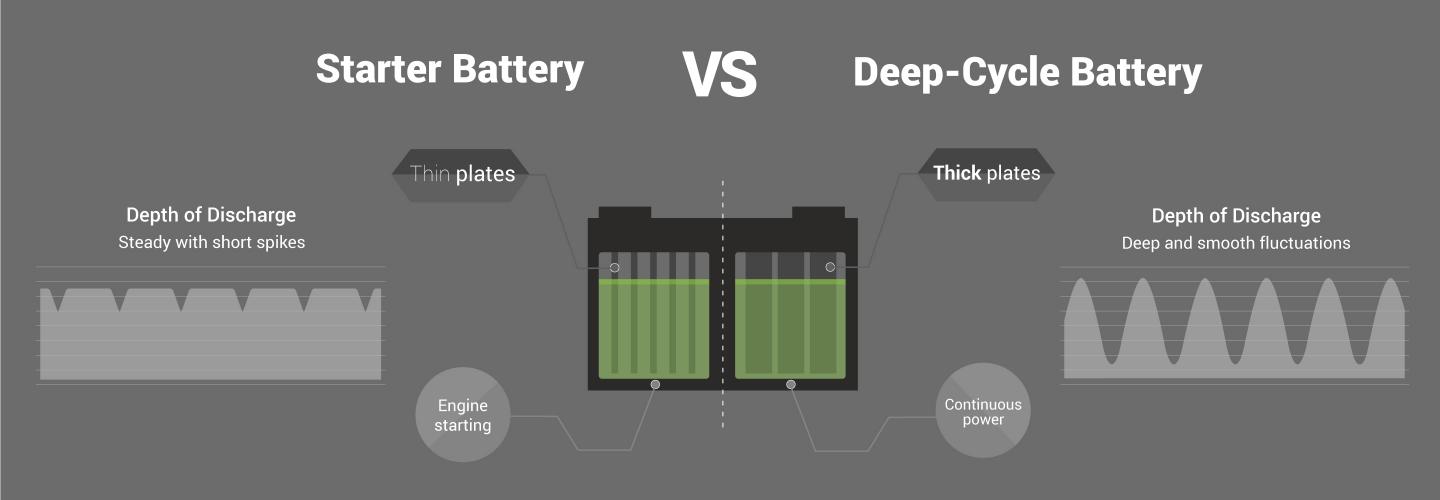20% OFF Two Days Only. Get Smart. Get Genius.
X Use Coupon Code: SMART14
A starter battery, also known as Starting, Lighting and Ignition (SLI) battery is designed to provide maximum power for a short duration - about 1-3 seconds. Despite its ability to generate high current, it cannot handle deep discharges without permanent long-term effects. Conversely, a deep cycle battery provides continuous power instead of short surges of power. It’s designed to handle the cyclic demands of deep discharge.
Whereas starter batteries are primarily designed for starting engines, deep-cycle batteries are designed for continuous power. The are commonly used in marine, golf cart, and industrial equipment applications. Instead of being configured for high energy bursts, it’s purpose is maximum capacity. In increased amp-hour capacity is achieved through thick plates, making it ideal for deep cycling and high cycle life. Although designed for deep discharges, discharging these types of batteries below 80-precent DoD (depth of discharge) will impact its lifespan.
Because starter batteries are primarily used for starting the engine of a vehicle, most starter batteries are rated in Cold Cranking Amps (CCA). CCA is defined as the numbers of amperes a battery can deliver at 32-degrees F (0-degrees C) for 30 seconds and maintain at least 1.2-volts. In other words, the higher the CCA rating, the higher its cracking ability (the opposite holds true). There is no direct correlation between a batteries CCA rating and amp-hour storage capacity. Starter batteries are designed with thin plates to achieve a low internal resistance and maximum surface area allowing for maximum current flow.



